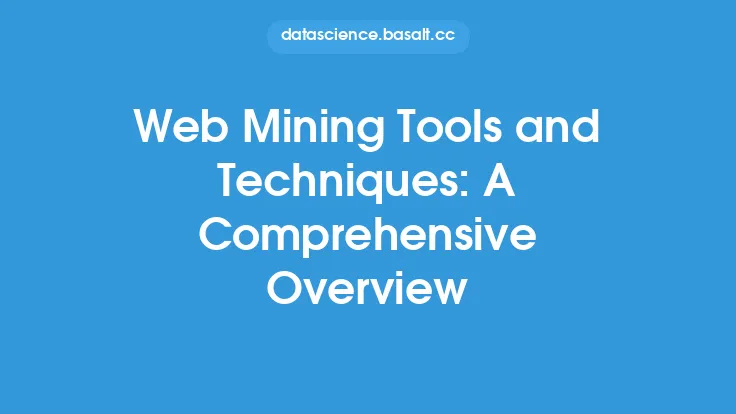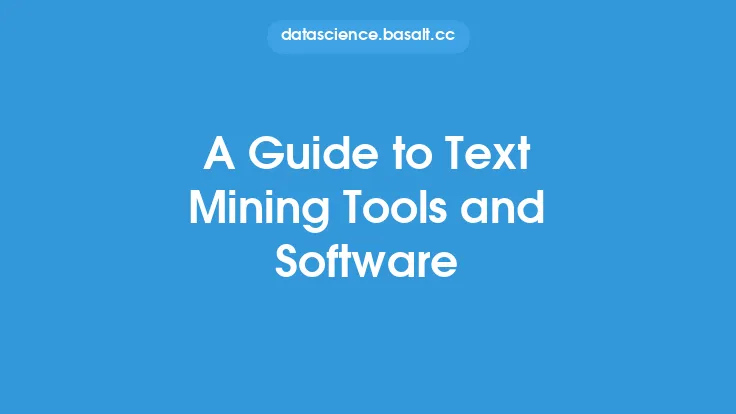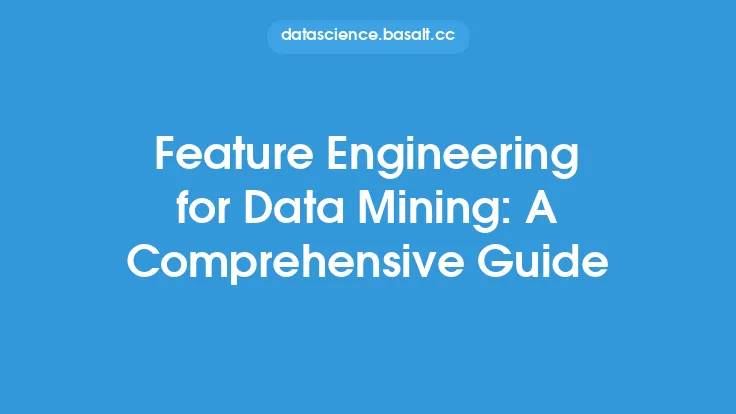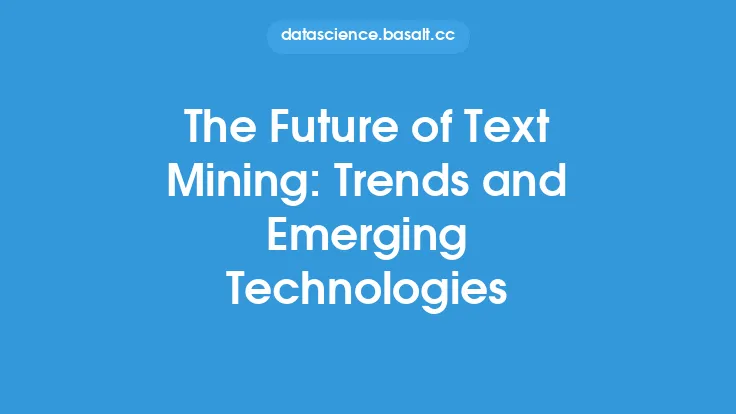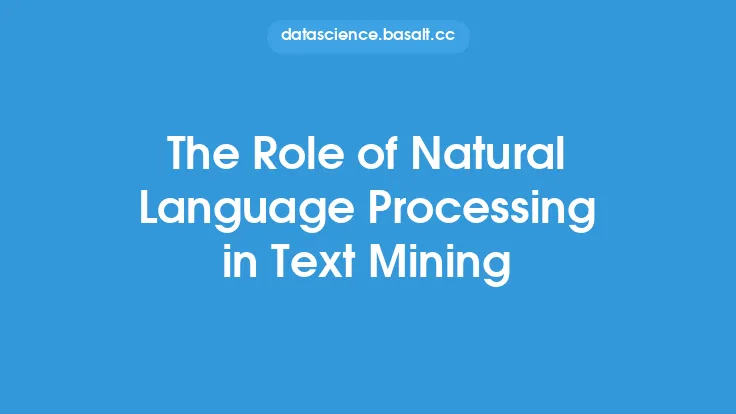Information retrieval and text mining are two closely related fields that have gained significant attention in recent years due to the exponential growth of unstructured data. The primary goal of information retrieval is to retrieve relevant information from a large collection of data, while text mining aims to extract valuable insights and patterns from unstructured text data. In this article, we will delve into the concepts, techniques, and applications of information retrieval and text mining, providing a comprehensive overview of these fields.
Introduction to Information Retrieval
Information retrieval is the process of retrieving relevant information from a large collection of data, such as documents, images, and videos. The primary goal of information retrieval is to provide users with accurate and relevant information in response to their queries. Information retrieval systems use various techniques, such as indexing, searching, and ranking, to retrieve relevant information from a large collection of data. These systems are widely used in search engines, digital libraries, and other applications where information needs to be retrieved quickly and efficiently.
Text Mining Fundamentals
Text mining, also known as text data mining, is the process of extracting valuable insights and patterns from unstructured text data. Text mining involves using various techniques, such as natural language processing, machine learning, and statistical analysis, to extract relevant information from text data. The primary goal of text mining is to identify patterns, trends, and relationships in text data that can provide valuable insights and support decision-making. Text mining has a wide range of applications, including sentiment analysis, topic modeling, and information retrieval.
Information Retrieval Models
Information retrieval models are used to retrieve relevant information from a large collection of data. There are several information retrieval models, including the Boolean model, vector space model, and probabilistic model. The Boolean model uses Boolean operators, such as AND, OR, and NOT, to retrieve relevant information. The vector space model represents documents as vectors in a high-dimensional space and uses similarity measures, such as cosine similarity, to retrieve relevant information. The probabilistic model uses probability theory to retrieve relevant information and is widely used in modern search engines.
Text Mining Techniques
Text mining techniques are used to extract valuable insights and patterns from unstructured text data. There are several text mining techniques, including tokenization, stemming, and lemmatization. Tokenization is the process of breaking down text into individual words or tokens. Stemming and lemmatization are used to reduce words to their base form, such as removing suffixes and prefixes. Other text mining techniques include named entity recognition, part-of-speech tagging, and sentiment analysis. Named entity recognition is used to identify named entities, such as people, places, and organizations, in text data. Part-of-speech tagging is used to identify the part of speech, such as noun, verb, or adjective, of each word in text data. Sentiment analysis is used to determine the sentiment or emotional tone of text data.
Applications of Information Retrieval and Text Mining
Information retrieval and text mining have a wide range of applications in various fields, including business, research, and healthcare. In business, information retrieval and text mining are used to analyze customer feedback, sentiment analysis, and competitive intelligence. In research, information retrieval and text mining are used to analyze large collections of academic papers, patents, and other documents. In healthcare, information retrieval and text mining are used to analyze medical records, clinical trials, and other healthcare-related documents.
Evaluation Metrics for Information Retrieval and Text Mining
Evaluation metrics are used to measure the performance of information retrieval and text mining systems. There are several evaluation metrics, including precision, recall, F1-score, and accuracy. Precision is the ratio of relevant documents retrieved to the total number of documents retrieved. Recall is the ratio of relevant documents retrieved to the total number of relevant documents in the collection. F1-score is the harmonic mean of precision and recall. Accuracy is the ratio of correctly classified documents to the total number of documents.
Challenges and Future Directions
Information retrieval and text mining face several challenges, including the increasing volume and complexity of text data, the need for more accurate and efficient algorithms, and the requirement for more effective evaluation metrics. Future directions for information retrieval and text mining include the development of more advanced algorithms, such as deep learning and natural language processing, and the application of these techniques to new domains, such as social media and healthcare.
Conclusion
In conclusion, information retrieval and text mining are two closely related fields that have gained significant attention in recent years due to the exponential growth of unstructured data. Information retrieval is the process of retrieving relevant information from a large collection of data, while text mining aims to extract valuable insights and patterns from unstructured text data. The primary goal of information retrieval is to provide users with accurate and relevant information in response to their queries, while the primary goal of text mining is to identify patterns, trends, and relationships in text data that can provide valuable insights and support decision-making. By understanding the concepts, techniques, and applications of information retrieval and text mining, we can develop more effective systems and algorithms to extract valuable insights from large collections of text data.
